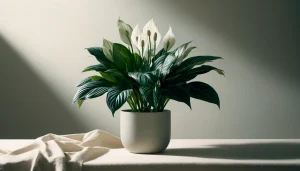Have you ever felt overwhelmed by constant notifications, endless to-do lists, and the relentless demands of daily life? Stress and anxiety can easily become our constant companions in such a hectic world. But imagine having a personal sanctuary right at home—a dedicated space where you can retreat, breathe deeply, and reconnect with yourself. Creating a calming meditation space at home is a simple and accessible way to bring some peace into your life. In this guide, we’ll walk you through the steps to transform a corner of your home into a place where you can escape the chaos and find your inner chill.
Remember, this is just a guide and by no means do you have to do everything in it. Pick and choose what works for you and the space that you have available.
Whether you’re a seasoned meditator or just beginning your journey, this step-by-step guide will help you when creating a calming meditation space at home.
Calming meditation space at Home – a how to guide.
1: Choosing the Right Space
Creating a calming meditation space starts with choosing the right location in your home. This initial step sets the foundation for your meditation practice, making it essential to find a spot that promotes peace and relaxation. Here are some key considerations to keep in mind:
Quiet and Private:
The ideal meditation space should be quiet and private, away from the noise and distractions of daily life. Choose a spot where you can be without interruptions, allowing you to fully immerse yourself in the practice. This might be a spare bedroom, a secluded corner of your living room, or even a section of your attic. The goal is to create a space where you feel safe and undisturbed, enhancing your ability to focus and relax.
Natural Light:
Natural light plays a significant role in creating a serene atmosphere. If possible, choose a space with ample natural light, such as near a window or in a sunlit room. Sunlight not only boosts your mood but also helps regulate your body’s internal clock, making your meditation sessions more effective. However, if natural light is limited, consider using soft, warm artificial lighting to mimic the calming effects of sunlight.
Space Considerations:
When selecting your meditation space, consider both the size and location. The area doesn’t need to be large—a small, cozy corner can be just as effective as a spacious room. Ensure there’s enough room for you to sit or lie comfortably, with some additional space for any meditation tools or decorations you wish to include. Locations like a corner of a room, a balcony, or a dedicated nook can work wonderfully. Basically, the key is to choose a space that feels inviting and can be easily adapted to your needs.
2: Setting the Mood
Once you’ve chosen the perfect spot for your meditation practice, the next step is setting the mood. Creating a calming and inviting atmosphere can help you relax and focus. Here are some elements to consider:
Declutter:
A clutter-free space is essential for fostering a sense of calm. Remove any unnecessary items that might distract you or create a feeling of chaos. Keep the area tidy and organized, with only the essentials for your meditation practice. A clean, uncluttered space allows your mind to relax and focus on the present moment without being overwhelmed by visual distractions.
 Color Scheme:
Color Scheme:
The colours you choose for your meditation space can significantly impact your mood and sense of tranquility. Opt for soft, soothing colours like gentle greens, and neutrals, which are known for their calming effects. You can use paint, fabrics, or accessories to introduce these calming hues into your space.
Aromatherapy:
Scents have a powerful influence on our emotions and can enhance your meditation experience. Incorporate aromatherapy by using essential oils, incense, or candles with calming scents such as lavender, sandalwood, or chamomile. These aromas can help reduce stress and create a serene atmosphere, making it easier for you to unwind and focus during your meditation sessions.
3: Comfortable Seating
Creating a meditation space that truly supports your practice involves ensuring comfort. Comfortable seating is essential for maintaining good posture and helping you stay focused during your sessions. Here’s how to achieve this:
 Cushions and Mats:
Cushions and Mats:
Meditation cushions, often called zafus, provide the right amount of support and comfort for sitting meditation. Pair it with a zabuton, a larger, flatter cushion, to provide extra cushioning for your knees and ankles. If you prefer lying down, a thick yoga mat can provide the necessary comfort and support.
Ergonomic Support:
Ensure your seating arrangement supports your back and allows you to sit as comfortable as possible. Ergonomic chairs designed for meditation or yoga stools can offer the necessary support while keeping your posture aligned. If you sit on the floor, bolster cushions or rolled-up blankets can be used to support your lower back and knees.
Personal Comfort:
Ultimately, the most important aspect of your seating is that it feels comfortable to you. Experiment with different seating options to find what suits your body best. Whether it’s a plush cushion, a supportive chair, or a simple mat, make sure it allows you to relax and focus without causing discomfort. It’s hard to have calming meditation space at home if you’re in pain.
4: Incorporating Nature
Bringing elements of nature into your meditation space can greatly enhance its calming and grounding effects. Nature has a soothing influence on our minds and bodies, helping us feel more connected and at peace. Here’s how to incorporate nature into your meditation space:
 Plants:
Plants:
Adding plants to your meditation space can improve air quality and bring a sense of calm. Choose low-maintenance plants like succulents, snake plants, or peace lilies that thrive indoors. The presence of greenery can create a natural and serene atmosphere, making your space feel more alive and vibrant.
Natural Elements:
Incorporate natural materials like wood, stones, and water features into your meditation space. Wooden furniture, bamboo mats, or stone decorations can add an earthy feel to the environment. Consider adding a small water fountain to bring the soothing sound of running water into your space, enhancing the overall sense of calm.
Outdoor Views:
If possible, choose a space with a view of the outdoors. Being able to see trees, plants, or a garden can enhance your connection to nature and provide a calming visual focus during meditation. If an outdoor view isn’t available, consider using nature-themed artwork or photographs to bring the essence of the outdoors inside.
5: Personal Touches
Personalizing your meditation space with meaningful items can make it feel more inviting and special. Adding personal touches allows you to create a space that resonates with you on a deeper level, making your meditation practice more enjoyable and fulfilling. Here are some ideas:
Meaningful Objects:
Include items that hold personal significance and bring you joy and peace. This could be anything from crystals, shells, or family heirlooms to spiritual symbols like Buddha statues or prayer beads. These objects can serve as focal points during your meditation and remind you of your intentions and goals.
Sound:
Sound can play a powerful role in enhancing your meditation practice. Consider incorporating tools like Tibetan singing bowls, wind chimes, or a small gong. These sounds can help you enter a meditative state more easily and create a soothing auditory environment. You might also use a small speaker to play calming music, nature sounds, or guided meditation tracks.
Artwork and Inspiration:
Decorate your space with artwork or inspirational quotes that uplift and motivate you. Choose pieces that evoke a sense of calm and positivity. This could be a painting, a photograph, or a tapestry that you find particularly inspiring. Visual reminders of peace and serenity can help set the tone for your meditation sessions.
6: Lighting
Lighting is a critical element in creating a calming meditation space. The right lighting can set the mood and enhance the overall atmosphere, helping you to relax and focus. Here’s how to effectively use lighting in your meditation space:
 Soft Lighting:
Soft Lighting:
Soft, warm lighting is ideal for a meditation space. It creates a soothing and inviting ambiance that can help you unwind. Consider using candles, salt lamps, or fairy lights to achieve this effect. These light sources emit a gentle glow that can make the space feel more peaceful and cozy.
Adjustable Lighting:
Having the ability to adjust the lighting in your meditation space is a bonus. Dimmer switches or lamps with adjustable brightness allow you to tailor the lighting to your mood and the time of day. During early morning or evening sessions, you might prefer softer, dimmer lighting, while daytime sessions might benefit from slightly brighter light. Plus, a dimmer switch isn’t that hard to install. You can find videos on how to do it on YouTube.Plus, a dimmer switch isn’t that hard to install. You can find videos on how to do it on YouTube
Natural Light:
Maximize the use of natural light whenever possible. Position your meditation space near a window to allow natural sunlight to filter in. Natural light can boost your mood and energy levels, making your meditation practice more enjoyable. Use sheer curtains to diffuse the light and create a gentle, calming effect.
7: Technology and Tools
While meditation is often about disconnecting from technology, certain tools can enhance your practice and help you achieve a deeper state of relaxation and mindfulness. Here are some ways to incorporate technology and tools into your meditation space:
Meditation Apps:
There are numerous meditation apps available that offer guided sessions, timers, and calming music. Apps like Headspace, Calm, and Insight Timer provide a variety of meditation practices suited for different needs and experience levels. Using a meditation app can help you stay consistent with your practice and explore new techniques.
Music and Timers:
Playing calming music or nature sounds can enhance the ambiance of your meditation space. Use a small Bluetooth speaker or a sound system to play soothing tracks. Additionally, a meditation timer can help you keep track of your sessions without having to constantly check the clock. Many meditation apps come with built-in timers, or you can use a standalone timer specifically designed for meditation.
 Wearable Technology:
Wearable Technology:
If you’re interested in tracking your meditation progress, consider using wearable technology. These devices can monitor your heart rate, breathing patterns, and overall stress levels. Some wearables also offer guided breathing exercises and mindfulness reminders. The Muse meditation headband is a great option.
Conclusion
Creating a calming meditation space at home is an empowering step towards enhancing your mental and emotional well-being. This space will not only be a retreat from the chaos of daily life but also a place where you can cultivate mindfulness, inner peace, and rejuvenation. Remember, the journey to creating your meditation space is a personal one. Take your time to explore what resonates with you and make adjustments as needed.
Additional Tips to Create a Calming Meditation Space at Home
Maintenance:
Keep your meditation space clean and inviting by regularly tidying up and removing any clutter. A well-maintained space will remain a serene and welcoming environment.
Adaptability:
As your meditation practice evolves, be open to making changes to your space. You might want to try different seating arrangements, add new elements, or adjust the lighting based on the season or time of day.
Resources:
Explore resources like online stores, local shops, or DIY projects for finding unique and meaningful items to enhance your meditation space. Consider incorporating items that are sustainably sourced or handmade to add a special touch.
Mindful Moments:
Even if you don’t have a dedicated space, you can create mindful moments throughout your home. Use simple techniques like deep breathing or brief meditation sessions to stay grounded and centered, regardless of your location.
By following these tips and creating a space that truly resonates with you, your meditation practice will become a cherished part of your daily routine, bringing lasting benefits to your overall well-being. Embrace the journey and enjoy the tranquility and peace that come from having a dedicated meditation space in your home.


Recent Comments